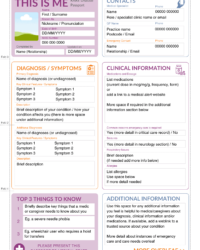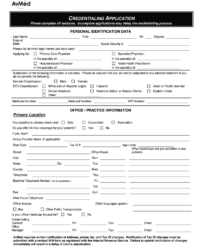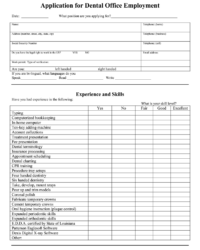Utilizing a structured format for these requests promotes clarity and efficiency, reducing the potential for errors and misunderstandings. This contributes to faster processing times, quicker access to care, and improved patient outcomes. A well-designed structure also facilitates consistent data collection, supporting better care planning and coordination among healthcare professionals.
This foundation of efficient information gathering and processing is crucial for a variety of topics related to delivering and managing in-home medical services. These topics can include patient intake procedures, care plan development, regulatory compliance, and the effective utilization of technology in home healthcare.
Key Components of a Home Healthcare Application
Effective applications for in-home medical services require specific information to ensure appropriate and timely care delivery. The following components are crucial for a comprehensive application.
1: Patient Demographics: Full legal name, date of birth, contact information, and address are fundamental for identification and communication.
2: Medical History: Current diagnoses, past medical conditions, allergies, medications, and previous treatments inform care planning and prevent adverse reactions.
3: Care Needs Assessment: A detailed description of required services, including skilled nursing, personal care, therapy, and medical equipment, ensures appropriate resource allocation.
4: Physician Information: Contact details and specialization of the referring physician enable communication and collaboration for consistent care.
5: Emergency Contact Information: Providing contact information for individuals to be notified in case of emergencies ensures swift action when necessary.
6: Insurance Information: Policy details, coverage specifics, and authorization requirements facilitate billing and streamline administrative processes.
7: Consent and Signatures: Patient or legal guardian signatures authorize the provision of services and acknowledge agreement with terms and conditions.
Complete and accurate information across these areas ensures efficient processing, appropriate care coordination, and ultimately, better patient outcomes.
How to Create a Home Health Care Application Template
Developing a standardized application template for home health care services ensures consistent data collection and streamlines the intake process. A well-designed template facilitates clear communication between patients, families, and healthcare providers.
1: Define Purpose and Scope: Clearly outline the specific purpose of the application and the types of services it covers. This ensures the template captures all necessary information for various care scenarios.
2: Structure for Logical Flow: Organize the template into sections that follow a logical progression, starting with patient demographics and moving through medical history, care needs, and consent. A clear structure enhances usability and completeness.
3: Incorporate Essential Data Fields: Include fields for all essential patient information, including demographics, medical history, current medications, allergies, insurance details, and emergency contact information. Comprehensive data collection supports informed decision-making.
4: Ensure Clarity and Conciseness: Use clear and concise language for instructions and field labels. Avoid jargon and complex terminology to ensure patients and families can easily understand and complete the application.
5: Design for Accessibility: Format the template with clear typography, appropriate font sizes, and ample white space for readability. Consider accessibility requirements for individuals with visual impairments or other disabilities.
6: Incorporate Legal and Compliance Requirements: Include necessary disclaimers, consent forms, and HIPAA compliance statements. Adherence to legal and regulatory standards protects patient privacy and ensures ethical practices.
7: Test and Refine: Pilot test the template with potential users and gather feedback to identify areas for improvement. Regularly review and update the template to reflect changes in regulations or service offerings.
A well-designed template, incorporating these steps, provides a crucial foundation for efficient home health care service delivery, benefiting both patients and providers. A structured application process ensures consistent data collection, facilitates effective communication, and streamlines administrative workflows, ultimately contributing to higher quality care.
Standardized application materials for home health care services provide a crucial framework for efficient and effective patient intake and care coordination. A well-designed template ensures comprehensive data collection, streamlines communication between stakeholders, and facilitates informed decision-making regarding appropriate care plans. From patient demographics and medical history to specific care needs and legal authorizations, a structured application process promotes accuracy, reduces administrative burden, and ultimately contributes to improved patient outcomes.
The adoption and implementation of robust application processes represent a significant step toward enhancing the delivery of home health care services. As the demand for in-home care continues to grow, prioritizing streamlined and standardized procedures will be essential for ensuring access to high-quality, patient-centered care. This focus on structured information gathering and processing lays the groundwork for a more efficient, responsive, and ultimately, more effective home health care ecosystem.


